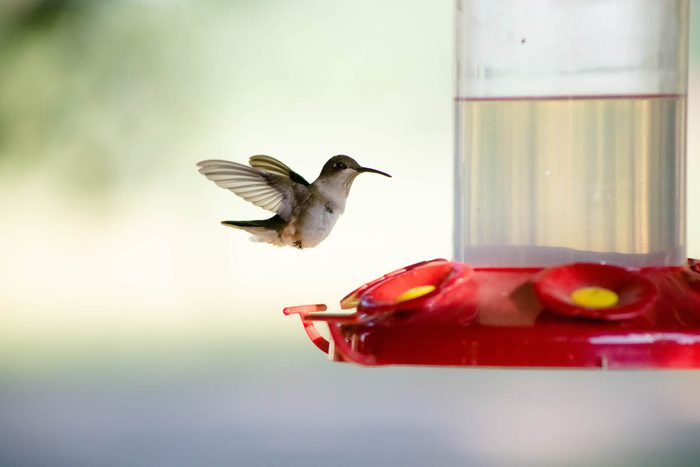
Using Red Dye in Your Sugar Water
You might spot red colored sugar water on store shelves in spring and summer. Don’t buy it! (And for that matter, don’t make it yourself by adding food coloring, either.) It can be tempting to turn sugar water red since hummingbirds are attracted to the color red, but the potential harms outweigh any benefits. The artificial ingredients in red dye could hurt the birds. To keep your backyard hummers happy and healthy, keep your sugar water as clear as the water in your bird bath. Here’s the only hummingbird nectar recipe you’ll ever need.
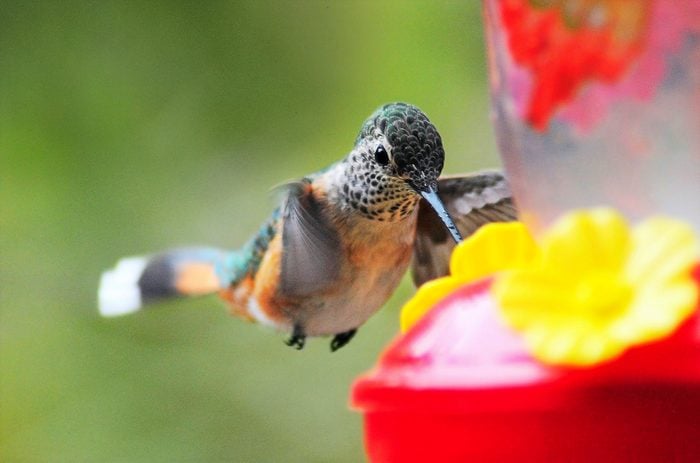
Adding Any Ingredients Other Than Plain White Sugar
You might believe you’re helping your hummingbirds by adding additional sweet ingredients, like honey, brown sugar or fruit juice, to your hummingbird mixture. Unfortunately, that belief is wrong. Honey and brown sugar can both be harmfully sticky—plus, brown sugar contains molasses, which can hurt hummingbirds because of its high iron content. Many fruit juice blends feature artificial sweeteners that offer no benefits for your flying jewels. Keep things simple at your feeder, and feed only sugar water: 1 part white (not powdered!) sugar mixed with 4 parts water.
Do you have more questions about feeding hummingbirds? Our experts have answers.
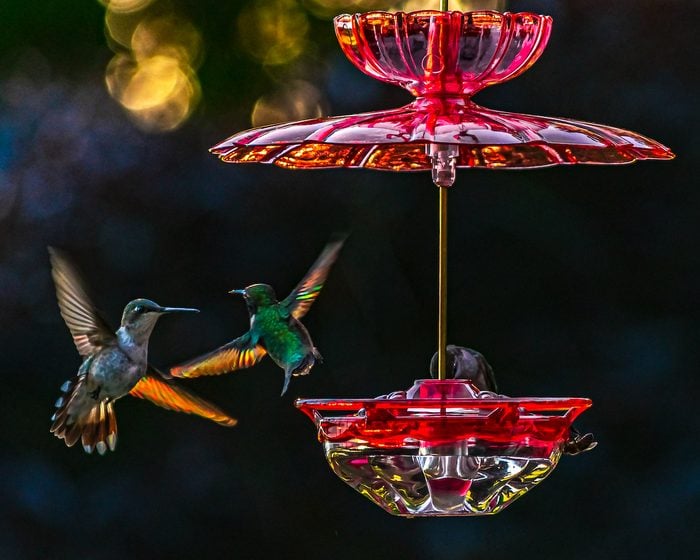
Not Using an Ant Moat
If this is the first you’re hearing about having an ant moat on your hummingbird feeder, you’ll want to start using one. Ant moats attach to the feeder’s hanger. When you fill the cup with water, it stops ants from crawling down and invading the hummers’ food source…and spoiling your good sugar water. (Your feeder might already have an ant moat. It’s worth checking to see—some, like the feeder pictured above, come with them built in.) Ant moats can be pretty, too; some are very detailed. But if you’d rather have a regular bronze cup, you can buy those too.
Ants aren’t the only bugs that take an interest in hummingbird feeders. Learn how to keep bees and wasps away, too.
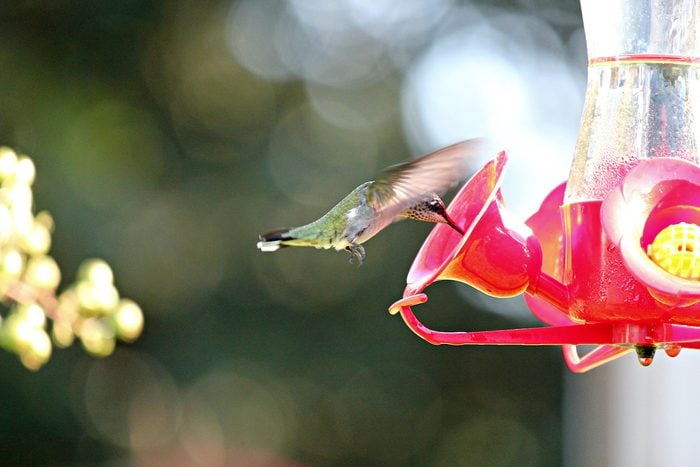
Not Cleaning Your Hummingbird Feeder
If you don’t maintain your hummingbird feeders, your backyard friends could be harmed by mold, bacteria or germs that accumulate from droppings or from sick birds. Clean your feeders once a week to make sure your hummingbirds keep humming along. Then fill your clean feeder with fresh sugar water. It’s not hard to clean a hummingbird feeder—you only need to empty the feeder and scrub it with either hot water or a bleach solution. You can even run your feeder through a dishwasher! These tiny cleaning brushes can help you reach all the nooks and crannies.
Find tips on how to safely clean your bird baths, too.
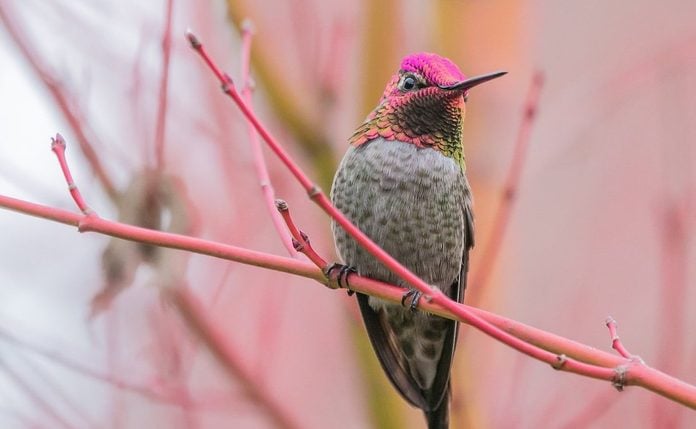
Setting Feeders Out at the Wrong Time
It seems obvious, but to attract hummingbirds, you need to set out your feeder when hummingbirds are around. And that’s not necessarily intuitive; hummers arrive in different parts of the country at different times. Do some investigating to determine when your hummingbirds return in spring, and then be sure to leave your feeders up for any late migrating hummingbirds in fall. In some states, certain species like Anna’s hummingbirds (above) often don’t leave at all!
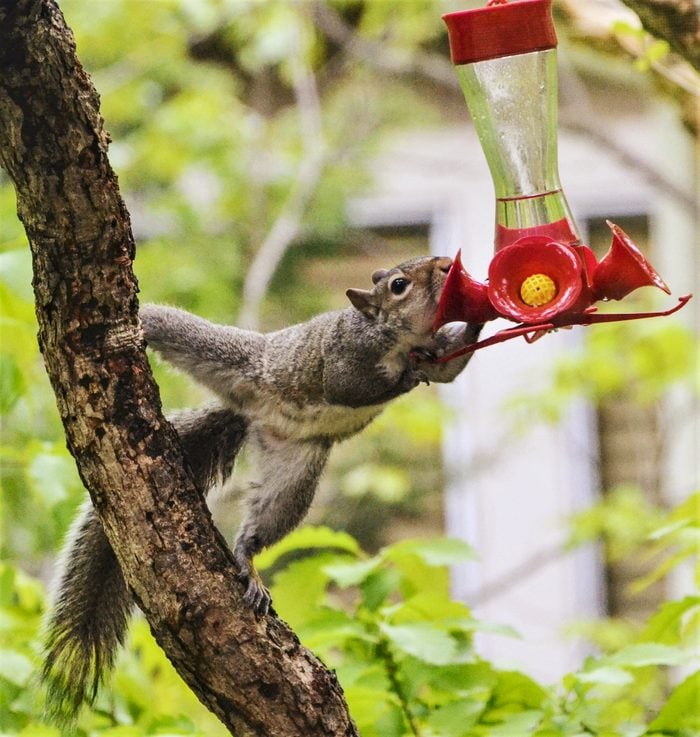
Not Placing the Feeder Correctly
When putting up a hummingbird feeder, take care that you’re keeping that feeder high enough off the ground. It should be out of reach of hummingbird predators like cats—and also make sure that other backyard critters, like squirrels and raccoons, can’t access the sugar water. Consider placing the feeder in the shade on hot days to slow algae growth and keep nectar fresh longer. Also make sure the feeder is in a place where it’s easy to see and enjoy! This will allow you to monitor it closely for filling and cleaning, too.
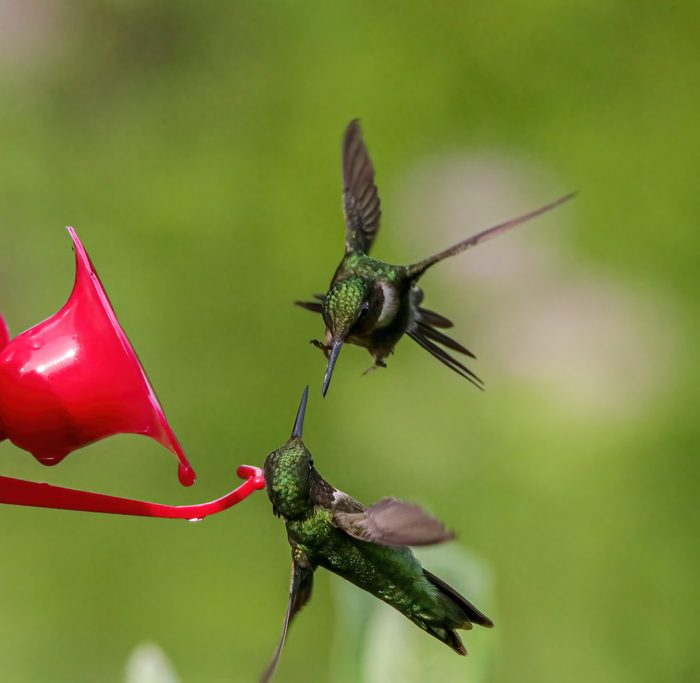
Offering Only One Hummingbird Feeder
It’s no secret that hummingbirds can be—and often are—very territorial. If you’re only setting out one sugar water feeder, a single bully hummingbird might wind up hogging the whole thing. Then, the rest of the hungry hummers in your backyard will have to look elsewhere. By setting out multiple feeders, you make it trickier for that aggressive hummingbird to “defend” both food sources…and the others will thank you!
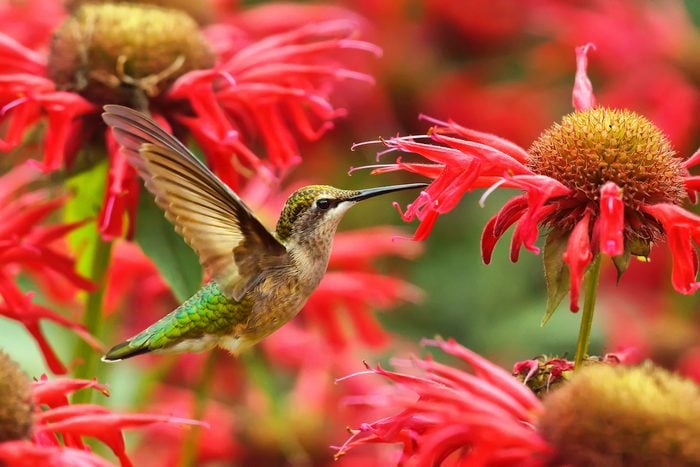
Not Planting the Right Flowers
This isn’t technically a feeder mistake, but if you’re looking to attract hummingbirds, it’s worth knowing. Hummers are more likely to visit your yard if, in addition to offering a feeder, you also plant flowers that they like. They’re attracted to the color red, and flower nectar is a valuable food source for them. If you plant perennials like bee balm (above) you won’t have to worry about re-planting every year. But there are plenty of good annuals for hummingbirds, too. Try these potted flowers if you have a small porch or balcony.
